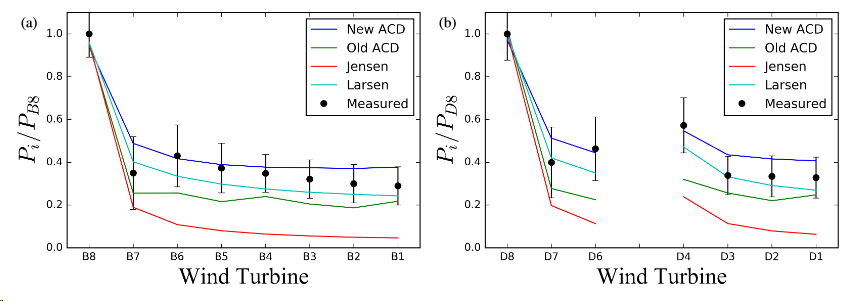February 2018 comparison of two kinematic wake models and two actuator disc models
Simisiroglou, Polatidis, and Ivanell compared these four models to data from Lillgrund offshore wind farm in Sweden in their paper "Wind farm power production assessment: a comparative analysis of two actuator disc methods and two analytical wake models". Here's one of various graphs showing the results:

All four models are reasonable for the second turbine in the wake. Further down the row, the newer actuator disc (ACD) and Larsen models are the most accurate.
For reference, in the the actuator disc models:
the rotor is represented by a permeable disk that allows the flow to pass through the rotor, at the same time as it is subject to the influence of the surface forces.
March 2017 comparison of three kinematic wake models
Seim, Gravdahl, and Adaramola compared three kinematic wake models to data from a wind farm in Norway in their 2017 paper "Validation of kinematic wind turbine wake models in complex terrain using actual windfarm production data".
The article is behind a paywall, but some of the results are indicated in the abstract, confirming the accuracy of the Larsen model:
[T]he accuracy of the Jensen-, Larsen- and Ishihara model are tested in eight single-wake cases with regard to several key aspects. [...] The Larsen model correlated well with the measured data regarding the normalized power deficit, while both the Jensen- and Ishihara model clearly overestimated the power deficit. At the wake centerline, the Larsen model was by far the most accurate, with a mean absolute error of 7%. The Jensen- and Ishihara model had a mean absolute error of 21% and 34% respectively. Both the Jensen- and Ishihara model agreed well with the observed wake width. The Larsen model widely overestimated the wake width in all cases, but with an almost constant offset. For the energy loss in the wake, the Larsen model performed best for the three investigated wake cases with a mean absolute error of 29%, although all the three wake models showed a varying performance with a tendency to underestimate the energy loss.
